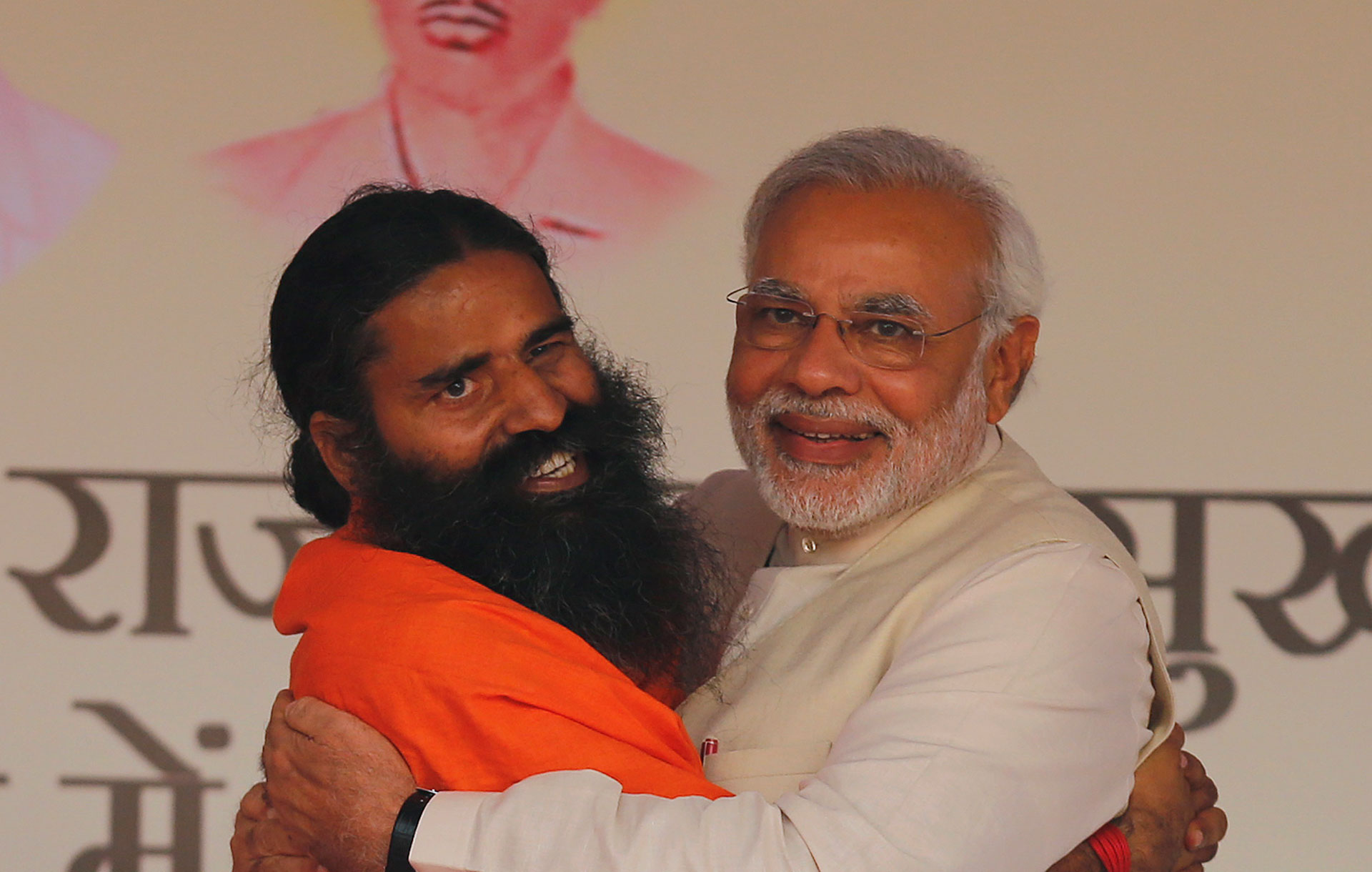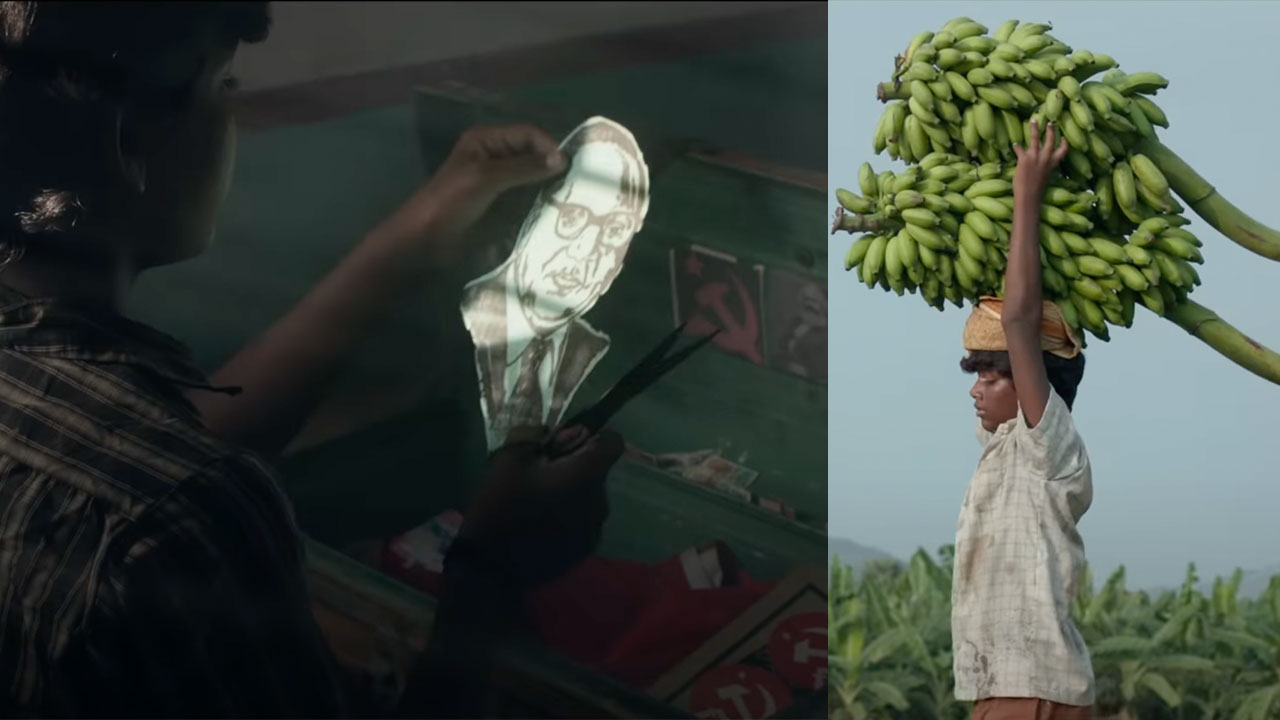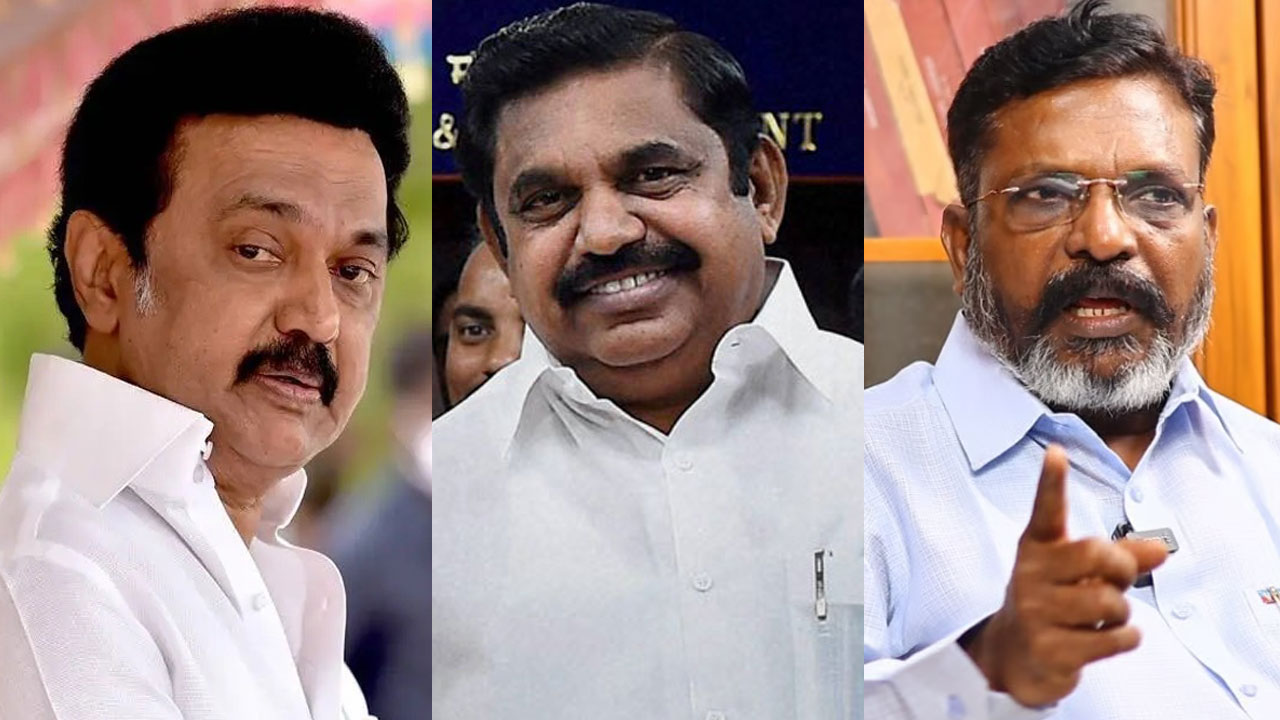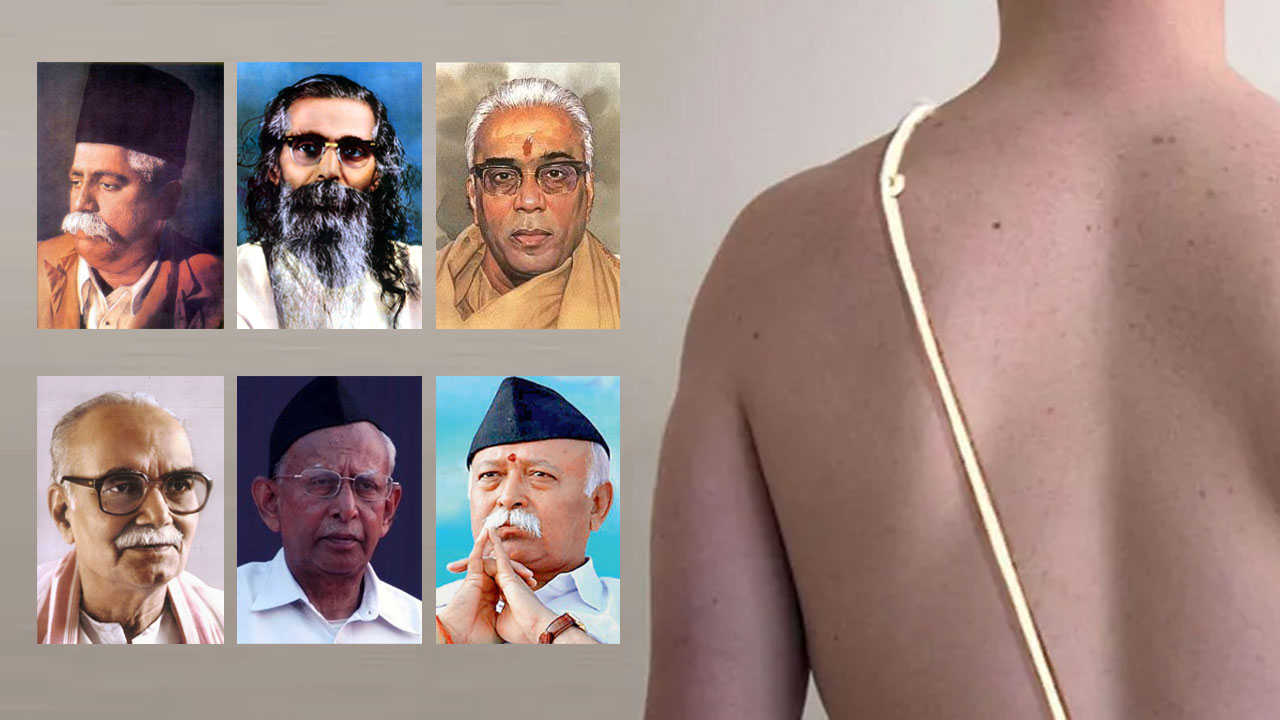No one can deny that Ramdev has repackaged Ayurveda – the ancient Indian system of medicine – in such a way that for the common man India and Ayurveda have become synonymous. The same is true of Yoga. Things have come to such a pass that any dispassionate analysis of the worth of Ayurveda or Yoga may strip you of the badge of a nationalist. Many proclamations to this effect have been made over the past six-seven years. Our prime minister has contributed immensely to the glorification of Ayurveda and Yoga.
Without even an iota of hesitation, I can say that Ramdev has taken full advantage of the prevalent situation. From a Yoga guru, he mutated into a business guru without anyone being the wiser. Today, he presides over a mega business empire, which, according to some, has an annual turnover of more than Rs 25,000 crores. His company (Patanjali) has grown by leaps and bounds over the past eight years. Having started with Yoga, Ramdev is now the uncrowned king of the Ayurveda market in the country. He had even announced that he discovered a cure for Covid-19. When assailed for providing no evidence of clinical trials of his drug, he conveniently backed out, saying that he had never talked about the drug being a “cure”. This was a shrewd business trick. He had friends in the right places and he knew well that his medicine wouldn’t be banned even if it didn’t have scientific sanction. That was precisely what happened. The Government of India allowed the sale of his medicine saying that it was an immunity booster. If someone other than Ramdev had made such a claim and then withdrawn it, would he have been spared?
Yoga, Ayurveda and the Bharatiya Janata Party (BJP) may not have a visible connect but along with nationalism, all the three are key ingredients of the concoction of Hindutva. Yoga has contributed immensely to the rise of businessmen like Ramdev. It is also being used by people like Narendra Modi to tighten their grip on power. Even Muslims are being asked to do Yoga, saying that it has nothing to do with Hinduism and is in fact integral to nationalism.
The same arguments are used with regard to Ayurveda. It is our indigenous system of medicine and so how can true nationalists not repose faith in it? This line of argument was used extensively by Ramdev in his high-decibel Swadeshi campaign.
Here we are not interested in what Ramdev did or did not do. What we want to explore is whether Ayurveda is associated with the Vedic system? Is there a link between Ayurveda and Hindutva? This question is important because over the past six-seven years, we are being told that Ayurveda, with its roots in the Vedic order, is the only system of medicine of the Hindu Rashtra. In fact, Ayurveda is being hailed as the panacea for all ills. And the common man now feels that he was deliberately kept in the dark about this shining aspect of India’s great ancient culture.
The effectiveness of this kind of propaganda is evident from the fact that it has managed to glorify the cow to such an extent that its excreta has now become part of our menu. I have seen people drinking cow urine straight from the animal’s bladder. This may not be dangerous. But it is definitely a cause for concern in the sense that we are yet to come out of the mythological beliefs that have made our country a butt of jokes in the wider world. Cow dung and urine may have some elements useful for humans but to say that excreta from other animals cannot or does not have any such element would be unscientific.
Similar tall, unsubstantiated claims are being made about Ayurveda. No system of medicine harms humans. All of them help free humans from disease. But here, we would do well to remember that independent thinking must have played the key role in the process of human beings learning the ways and means of curing themselves. The primitive man was completely under the sway of the natural forces. He had no means to control birth or death and knew of no way that would make him better when he fell ill. Then, he must have observed that eating or drinking some particular things brought relief – fever went down and stomach ache eased; some things helped revive an unconscious man; applying the paste of certain leaves or shrubs on wounds lessened pain and speeded up healing. These and other similar discoveries must have set the pace for the development of systems for healing the sick. Subsequently, some brilliant minds must have realized that certain things, when eaten or drunk, have identical effects on all humans. That must have helped them draw appropriate conclusions and develop cause-effect relationships with universal application.
Scholars tell us that India developed scientific consciousness quite early in history. Indian scientists were guided by materialist ideas. But later, Vedic thought throttled scientific consciousness and materialist philosophies.
The history of the Unani system of medicine in India is more glorious than that of Ayurveda. The Unani system is more scientific, too. It is said that the practitioners of Unani were so committed to their profession that they didn’t mind even tasting urine and stool of patients to ascertain the cause of their illness. That is why the Unani system of medicine spread to the other parts of the world while Ayurveda got lost in the labyrinth of philosophy and stagnated as an extension of Vedic thought. For the Unani practitioners, medicine was not a means for philosophical attainments, but a practical science which could cure disease or at least bring some relief to the ailing. This was the sole objective of their pursuit of knowledge. And this, exactly, is the framework within which modern medicine, which we call allopathy, operates.
The Indian system of medicine should have been named Ayurvigyan (science of life). But instead it was given the name of Ayurveda (veda of life), as if it was a part of the Vedas. The word “Ayurveda” itself shows that the science of healing was forcibly given a religious veneer. In this context, we will analyze the contents of two treatises on Ayurveda, Charak Samhita and Sushrut Samhita. Scholars say that the two books do contain many scientific facts, but that is natural, for there can be no medicine without science. But in both the treatises, science has got buried under heaps and heaps of metaphysical surmises – so much so that instead of the science of healing, metaphysics has become the dominating theme of the books. The raison d’être of medicine has been put on the back-burner. In simpler words, a secular science has been reduced to a communal discourse.
It is pointed out the two treatises threw an open challenge to the widely prevalent belief at the time that physical pain and disease are god’s curse, which nothing can free you from, barring the occult and divine powers. This was par for the course because no system of medicine can concede that rituals or exorcism can treat diseases. These systems are founded on the idea that divinity has no role in causing or curing any ailment.

Charak Samhita has clear brahmanical overtones. Jean Filliozat (1906-1982), a French scholar credited with an extensive study of Indian medical sciences, has written about the Charak Samhita. He has said that the editor of the text must have been a firm believer in Vedic thought. Charak Samhita is an ancient treatise and talks about treatment processes and medicinal plants and herbs suggested by different people. Many writers and vaidyas (traditional doctors) would have contributed to it and their views would have been compiled in the book based on their scientific value. But later, probably under immense pressure from the Vedic tradition, it was given a religious wrapping. Other scientists also met the same fate. When some of them contradicted the scriptures by, for example, declaring that solar eclipse is caused by the moon coming between the earth and the sun, their views were brushed aside.
Aryabhatt had many achievements to his name. He proved that the earth spins on its axis and that solar eclipse is caused when the moon’s shadow falls on the earth and lunar eclipse, when the earth’s shadow falls on the moon, another scientist, Brahmagupta categorically denied that it was so and insisted that the demon twins Rahu-Ketu were responsible for eclipses. Brahmagupta knew very well that Aryabhatt was spot on, but he could not gather the courage to contradict the brahmanical scriptures. As a branch of knowledge, medical science, too, must have faced similar pressures.
The ancient interpreters of maladies must have known quite well that only medicine – and not mantras and exorcist practices – can cure a sick person. But no one could openly say so, because there would be grave consequences. Sushrut Samhita says, “Eight branches of Ayurveda were born out of the mouth of Brahma and were consigned to a lowly station. That is why a physician who knows his duty should do as the priest says.” These lines are a clear indication that Brahmanism and purohitvaad were in the driver’s seat when the discussions should have been confined to preventing and curing disease. The Sushrut Samhita says, “Brahma was the first to inculcate the principles of the holy Ayurveda. Prajapati learnt the science from him. The Ashvins learned it from Prajapati and imparted the knowledge to Indra, who has favoured me [Dhanvantri] with all of the knowledge concerned. I, for the good of mankind, am ready to impart it to those who dwell on this earth.” (An English Translation of Sushruta Samhita, Kaviraj Kunja Lal Bhishagratna, 1907, Calcutta). While Dhanvantri was sharing his knowledge, a Rishi called Sushrut was present, who put it in writing.
From the above lines, it would be clear to the reader how medical science was forced into the labyrinth of the Vedas. Clearly, once science is given a veneer of religion, it becomes immune to challenges. History tells us that science and religion have always had an uneasy and even hostile relationship. That has been true of the entire world. But while many civilizations successfully rescued science from the clutches of religion, in India, people like Ramdev are using religion to add a layer of divinity to the science of medicine and are laughing all the way to the bank. What can possibly be common between divinity and medicine?
However, things do not end here. In India, mythological nonsense injected into the science of medicine caused the latter to lose its vigour. Can you believe that this system of medicine is also riddled with sharp incisions caused by the pernicious caste and Varna system? We will talk about it later in this article.
We can quote many such excerpts from these brahmanical works. We have enough evidence to prove that the writers of these works were less interested in the science of healing and the health of the patients than in spreading Vedic ideas and thought. Sushrut Samhita says that the Vedic gods should be invoked through mantras ordained by the Vedas to seek their blessings. That is not all. They also prescribe “homa”, yagna and so on to propitiate the Brahmins and get their blessings. This science states that the various organs of our body and their workings are under the control of the Vedic gods.
Here is an instance from the Sushrut Samihta: “Brahma is the presiding deity of thy self; moon-god of your mind; the Quarters of the heaven of thy ears; Varuna, thy faculty of cognition; the Sun god, thy eyes; the water, thy vigour; fire, thy taste; earth, thy nose; Indra, thy fortitude; Vishnu, thy feet; Mitra, thy rectum and Prajapati, thy reproductive organs.”
The Sushrut Samhita is not completely devoid of anything useful. It is a glorious work that tells us that Indian medical science was in no way inferior to the Unani system. This writer has studied the treatise and can report that it explains in detail how serious ailments can be cured. But it is also a storehouse of unscientific assertions which, driven by the love for the Vedic tradition, it seeks to shrewdly propagate. It is clear that the prescriptions listed in the treatise may be less useful in treating diseases and more potent in spreading Vedic thought. Ramdev is doing just that. He is using Yoga and Ayurveda to propagate Vedic ideas.
Charak Samhita is a little different. It talks about curing diseases but it gives such a detailed exposition of the theories of soul and rebirth that these theories feel like the sole purpose of the text. I would like to refer to one such proposition in the book. It says, “People have some doubts regarding the other world. They doubt whether they will be reborn after death. Why this doubt? Acharya answered this question thus: There are some men who are atheists. They believe that what they can’t see doesn’t exist. Since one cannot see rebirth, they believe that it doesn’t happen. There are others who are theists. They believe in rebirth because the scriptures say that rebirth takes place.” It is apparent that such statements kill scientific thinking and give Vedic beliefs precedence over science. These kinds of beliefs are not only anti-science but a cruel joke on the scientific systems of medicine.
The Ayurvedic system of medicine not only strengthens mythological narratives but also seems to be reinforcing the Varna system. The priests and the Brahmins used their Vedic knowledge as weapons to destroy this system of medicine. They abused physicians to their heart’s content and issued diktats to banish them from society. The Brahmins and the priests declared medicine as a lowly, mean profession and prescribed social distancing from those engaged in medicine and other such squalid professions. Is it not inhuman to proclaim that this work – which developed to free mankind from pain; which, braving all kinds of restrictions, took the medical profession forward; which often involved risking one’s own life and ingesting poisonous substances to understand their effect on the human body – is wretched and vile? How would you describe a tradition that treats doctors in this way?
Here, I would like to quote from the Dharmasutra of Vashishta. He writes, “Just as a dwij who has no knowledge of Vedas cannot be considered a Brahmin, similarly, those engaged in business, those making their living from dance or theatre, those who follow the orders of a Shudra, those who steal to fill their stomach and those whose adopt medicine as their profession should not be considered Brahmin.”
Gautam Dharmasutra also uses the same language. It says, “A Brahmin can accept food from a businessman, who himself is not an artisan. But he should not accept food from an artisan, an adulterous woman, a criminal, a man who performs surgery and such other persons.”
Aapstambh Dharmasutra also strikes a similar note of caution. “Food grains given by body-healers, hunters, surgeons, bird-catchers and adulterous or infertile women should not be accepted.” Even accepting alms from body-healers is strictly prohibited.
Manu makes similar prescriptions. According to him, the people of the higher varnas should not accept food from physicians. He says, “The food obtained from physicians is as contaminated as pus.” And also, “The mere presence of physicians displeases the gods and the ancestors.”
We can say without an iota of doubt that all attempts were made to banish the Hakims and the Jaraahs (surgeons) from society. You can just imagine what all these healers must have faced as a result of these religious diktats.
At the same time, there was a provision for strict punishment if a physician used any wrong procedure to treat an upper-caste person. The system of medicine that was in use in the Buddhist era was in keeping with the anti-Varna system sentiment prevalent then. Buddha said, “The one who wants to serve me should serve the ailing.” It is thus clear that at the time, the Indian system of medicine was not Ayur “veda” but Ayur “vigyan”. While attacking the ideology of the Vedic priests, Buddha gave due respect to the science of medicine.
In “Mahavagga”, Buddha makes five observations about care-givers. According to the translation by Rahul Sankrityayan, Buddha says, “Monks! Five qualities make a care-giver capable of providing care to the patient: (1) Gives the right medicine; (2) Knows about things that are suitable or unsuitable for the patient – removes the unsuitable ones and brings in the suitable; (3) Serves the patient out of love and not expecting some reward; (4) Doesn’t loath cleaning urine, faeces and vomit; and (5) Uses religious stories from time to time to pep up the patient and make him happy.”
Those in the know say that the fifth quality listed by Buddha does not find mention in the Charak Samhita. This quality is instead about compassion.
Buddhist tradition talks about a renowned physician called Jivaka Komarabhacca. He and his system of medicine find mention in the Vinay Pitaka. It is said that besides being the personal physician to Bimbisara, the ruler of Magadh, he was also Buddha’s friend and used to treat him when required. He was a Buddhist and would also treat the monks.
In Buddhist Sanghas, the health of the monks was important. If a monk wanted to take a medicine containing an element which had not been used in the Sangha, he had to seek the permission of Buddha. It is claimed that Buddha considered Ayurveda as an emancipator of human beings. However, there is no Buddhist work dating back to the Buddhist era that says so. In any case, Buddha could never have accepted the Vedic beliefs in Ayurveda. Many of his sermons were based on the science of medicine. It is said that his sermons were like medicine for those in pain.
There is a poem comparing Buddha’s sermons to the medicinal herbs and plants:
“The different types of medicinal plants and herbs in this world
Are nothing before the herb called Dhamma
O’ monks, drink it
Become immortal by drinking the herb of Dhamma
Acquire the ultimate knowledge
Get freedom from illusions and attain nirvana.”
The “Mahavagga” of the Vinay Pitaka systematically describes the medicines, unadulterated with mantras or exorcist practices, prevalent in the Buddhist era. In this work, Buddha himself instructs his disciples on medicines. There is nothing extraordinary about these medicines but they do reveal the existence of a well-delineated system of medicine. We also come to know of a surgeon called Akash Gotto who performed an anal fistula surgery. William Woodville Rockhill’s Life of Buddha tells us that Jeevak studied medicine at the Taxila University under Aatreya.
Buddha was a patron of medical science and his attitude towards ideas promoted by the scriptures of the Brahmins was no different from that of any anti-Veda person. The forest dwellers must have spent their life looking for the medicinal herbs and plants in the forests. Their knowledge must have been compiled and codified before covering it with a thick layer of brahmanical principles. The Samhitas which came into being thus, held medicine in one hand and a sword to massacre humanism in the other. These theories are still a part of Ayurveda. Even after the passage of several centuries, Ayurveda remains unchanged. What Ramdev has been doing for the past six-seven years is proof.
(Translation: Amrish Herdenia; copy-editing: Anil)
Forward Press also publishes books on Bahujan issues. Forward Press Books sheds light on the widespread problems as well as the finer aspects of Bahujan (Dalit, OBC, Adivasi, Nomadic, Pasmanda) society, culture, literature and politics. Contact us for a list of FP Books’ titles and to order. Mobile: +917827427311, Email: info@forwardmagazine.in)
The titles from Forward Press Books are also available on Kindle and these e-books cost less than their print versions. Browse and buy:
The Case for Bahujan Literature
Dalit Panthers: An Authoritative History








